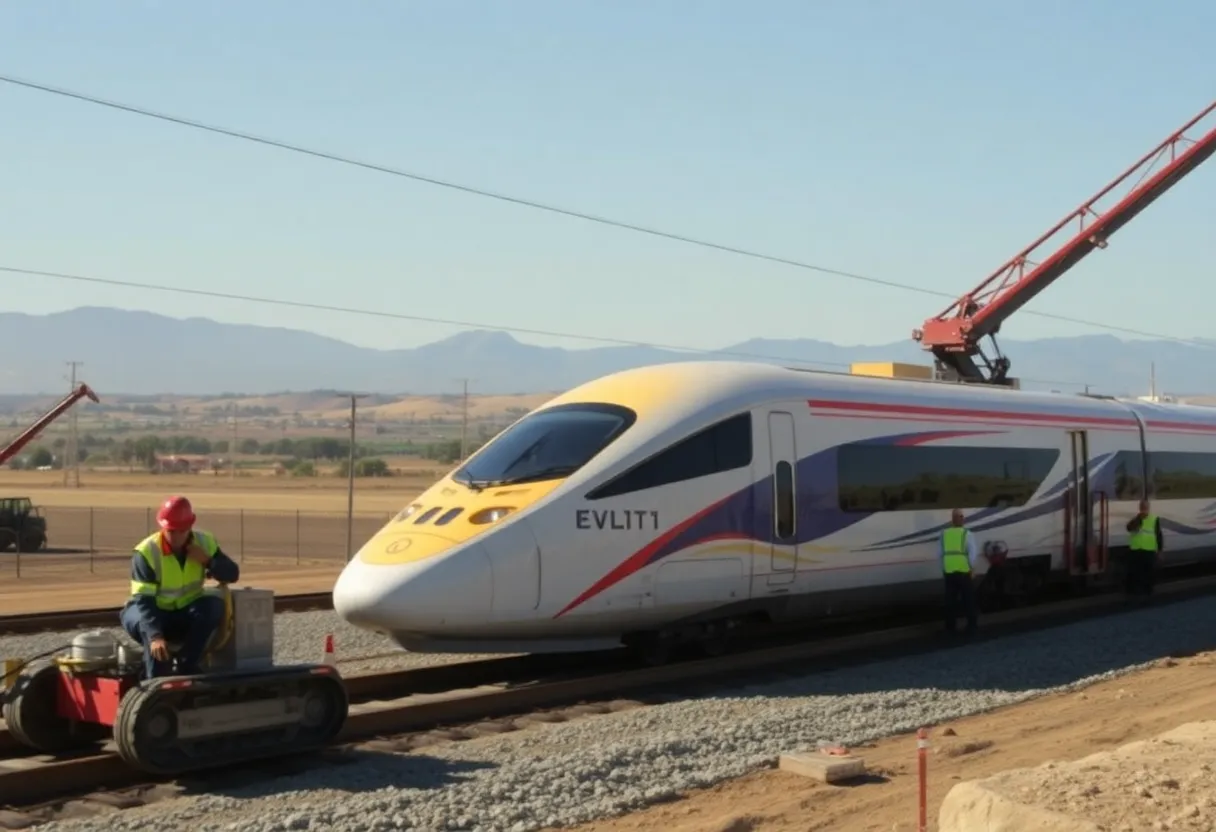California, August 26, 2025
News Summary
California’s high-speed rail project, initially approved with a $33 billion budget, now faces costs soaring to $128 billion due to significant delays and funding challenges. Lawmakers are working on legislation and partnerships to stabilize finances as the project continues to progress, with aims to enhance economic connectivity and environmental benefits. The timeline shows links from Palmdale to Gilroy by 2038, and construction of a Merced to Bakersfield segment expected to finish by 2032. Critics express concerns about the project’s financial viability amid rising costs.
California’s high-speed rail project, initially approved by voters in 2008 at a cost of $33 billion, now faces an estimated total budget of up to $128 billion. This staggering increase comes amidst significant delays, with construction progressing mainly in the Central Valley. The state government has allocated approximately $87 billion for the segment linking Palmdale to Gilroy, projecting its completion by 2038.
During a recent news conference, state lawmakers and business leaders discussed the current status of the project. Among the updates, State Senator Dave Cortese, chair of the Senate Transportation Committee, reiterated the critical role that this high-speed rail initiative plays in enhancing California’s economy and delivering environmental benefits. He noted that there remains robust support for the project, particularly from younger voters.
The Senate has introduced new legislation, SB 545, to create additional funding sources for the rail system. This move comes in the wake of challenges faced in the project’s financing, including a significant $4 billion cut in federal funding announced by the Trump administration in July. In response, the California High-Speed Rail Authority has filed a lawsuit aimed at restoring these funds.
Despite political controversies—including criticisms from Trump and Transportation Secretary Sean Duffy, who labeled the project as a “train to nowhere”—the California high-speed rail initiative continues to progress. So far, the project has collected over $24 billion in funding primarily sourced from state investments, with current construction focused on a 119-mile stretch expected to connect Merced to Bakersfield by 2032.
Senator Cortese acknowledged the substantial taxpayer dollars already spent on the project, which has ballooned to exceed the $100 billion mark. Critics of the project, including Republican Senator Tony Strickland, have raised questions about its financial viability and potential return on investment in light of the drastic budget increases.
Upon completion, the proposed train tracks are designed to stretch roughly 400 miles, facilitating essential connectivity between major cities such as San Francisco and Los Angeles. However, the finalization of this route is dependent on the escalating costs associated with the project.
In addition to transportation improvements, Senator Cortese asserted that the high-speed rail project is poised to spur economic development opportunities, including plans for housing developments along the rail corridor. The California High-Speed Rail Authority has projected that the completed system could create over 1 million jobs and generate $86 billion in labor income once the line is operational.
Currently, a bipartisan committee is examining concerns regarding possible misrepresentations of ridership projections made by the California High-Speed Rail Authority. Ian Choudri, Chief Executive of the Authority, described the project as being at a “crossroads,” necessitating long-term financial commitments to ensure its future viability.
In response to financial challenges, Senator Cortese is also working on legislative measures aimed at facilitating public-private partnerships to enhance funding for the project, reflecting ongoing efforts to secure its long-term success amid rising costs and delays.
FAQ
What is the current estimated budget for the California high-speed rail project?
The current estimated budget for the project has soared to up to $128 billion.
When was the project originally approved and for how much?
The project was originally approved by California voters in 2008 with a cost of $33 billion.
What is the timeline for project completion?
The current timeline projects the linking of Palmdale to Gilroy by 2038, with sections like Merced to Bakersfield expected to be completed by 2032.
What challenges has the project faced?
The project has faced numerous delays, budget increases, and a loss of $4 billion in federal funding due to decisions by the Trump administration.
What economic benefits could the high-speed rail project provide?
Once completed, the project could create over 1 million jobs and generate $86 billion in labor income.
| Feature | Details |
|---|---|
| Initial Budget | $33 billion |
| Current Estimated Budget | $128 billion |
| Funding Collected So Far | $24 billion |
| Completion Targets | Palmdale to Gilroy by 2038; Merced to Bakersfield by 2032 |
| Projected Jobs Created | Over 1 million |
| Projected Labor Income | $86 billion |
Deeper Dive: News & Info About This Topic
- CBS News: California High-Speed Rail Project Changes
- Wikipedia: California High-Speed Rail
- Bakersfield Now: High-Speed Rail Cost Challenges
- Google Search: California High-Speed Rail
- LA Times: Lawmakers Push for High-Speed Rail Funding
- Google Scholar: California High-Speed Rail
- Newsweek: High-Speed Rail Plan
- Encyclopedia Britannica: High-Speed Rail
- NBC Bay Area: California High-Speed Rail Push
- Google News: California High-Speed Rail Project

Author: STAFF HERE SAN DIEGO WRITER
The SAN DIEGO STAFF WRITER represents the experienced team at HERESanDiego.com, your go-to source for actionable local news and information in San Diego, San Diego County, and beyond. Specializing in "news you can use," we cover essential topics like product reviews for personal and business needs, local business directories, politics, real estate trends, neighborhood insights, and state news affecting the area—with deep expertise drawn from years of dedicated reporting and strong community input, including local press releases and business updates. We deliver top reporting on high-value events such as Comic-Con International, San Diego County Fair, and San Diego Pride Festival. Our coverage extends to key organizations like the San Diego Regional Chamber of Commerce and United Way of San Diego County, plus leading businesses in biotechnology, healthcare, and technology that power the local economy such as Qualcomm, Illumina, and Scripps Health. As part of the broader HERE network, including HEREAnaheim.com, HEREBeverlyHills.com, HERECostaMesa.com, HERECoronado.com, HEREHollywood.com, HEREHuntingtonBeach.com, HERELongBeach.com, HERELosAngeles.com, HEREMissionViejo.com, and HERESantaAna.com, we provide comprehensive, credible insights into California's dynamic landscape.





